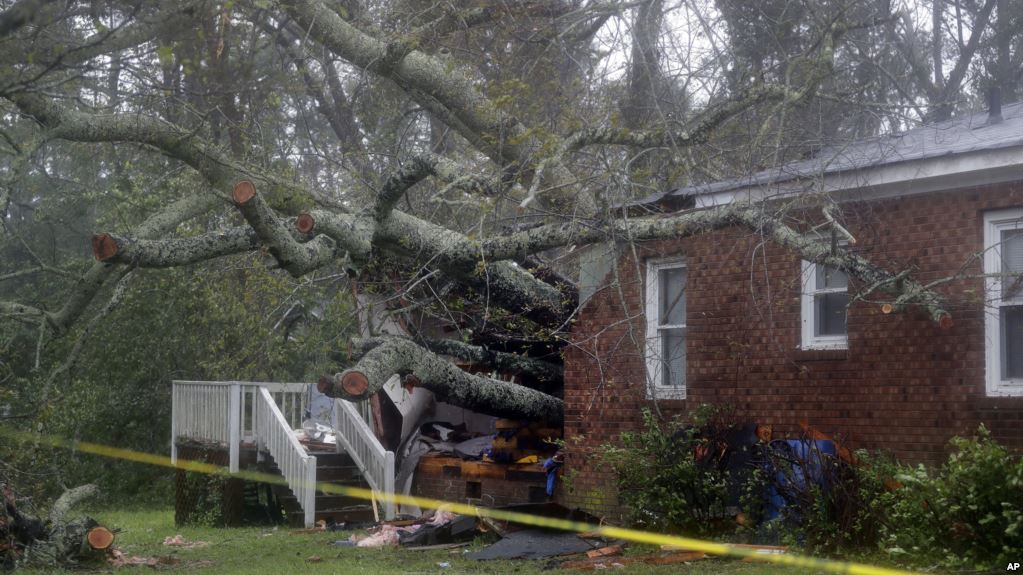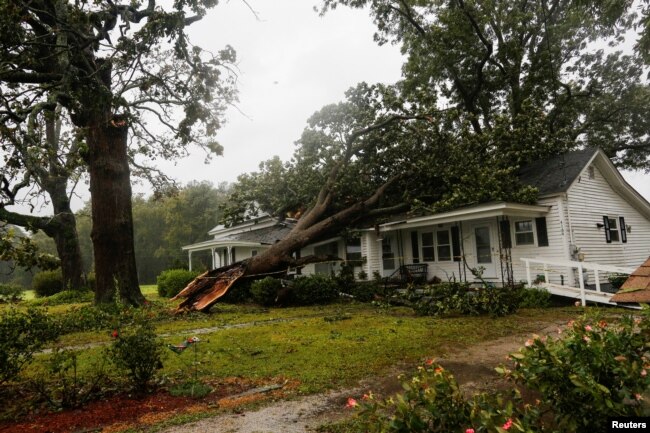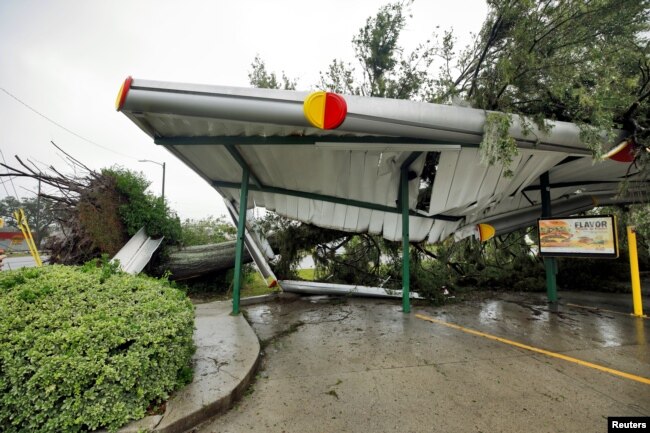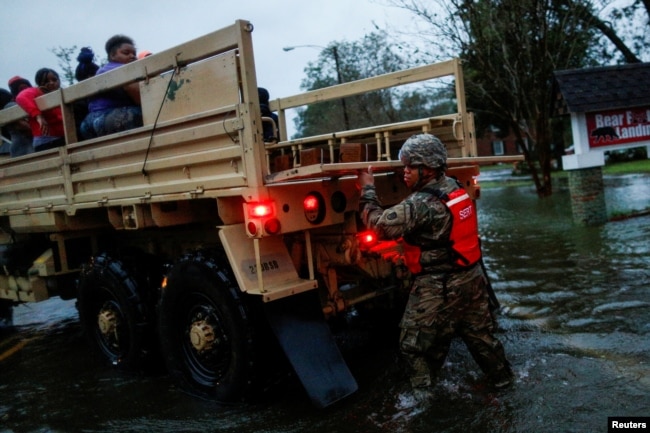
Hurricane Florence has been downgraded to a tropical storm, after barreling into North Carolina with damaging winds and heavy rain, leaving at least five people dead.
And the worst is not over.
“The fact is this storm is deadly and we know we are days away from an ending,” said North Carolina Governor Roy Cooper.
Some towns have received more than 2 feet (60 centimeters) of rain, and forecasters warned that as much as 3 feet (1 meter) of water could trigger epic flooding well inland through early next week.
Florence already has proved deadly. Police in Wilmington say a mother and baby were killed when a tree fell on their house. A woman in Pender County, North Carolina, died from a heart attack after calling emergency services, but paramedics could not reach her because of fallen trees.
Officials say two people died in Lenoir County. A 78-year-old man was electrocuted while trying to connect extension cords in the rain while another man died when he was knocked down by high winds while checking on his dogs.
Winds slow
The National Hurricane Center said Florence’s winds have slowed to tropical storm strength, and said the storm is moving slowly inland. By Saturday morning, top sustained winds had weakened to 50 mph (80 kph) as it moved farther inland.
At 5 a.m., the center of the storm was all but parked over South Carolina, about 35 miles (55 kilometers) west of Myrtle Beach, moving west-southwest at just 5 mph (8 kph) and scooping massive amounts of moisture from the sea.
But it was clear that this was really about the water. Morehead City, North Carolina, had received 23 inches (58 centimeters) of rain by Friday night, and forecasters warned Saturday morning that parts of the Carolinas could get up to 15 inches (38 centimeters) more.
The storm’s movement, not its strength, has forecasters and officials worried.
Florence is moving inland at 10 kilometers per hour (6 mph), giving it more time to churn, suck up water, batter the coast, and bring massive amounts of rain inland.
Astronaut snaps picture of Hurricane Florence as it makes landfall https://t.co/ynatj0UWD2 pic.twitter.com/mVmOOhVT9z
— New York Post (@nypost) September 15, 2018
Meteorologist Ryan Maue of weathermodels.com said Florence could dump a staggering 18 trillion gallons (68 trillion liters) of rain over a week on North Carolina, South Carolina, Virginia, Georgia, Tennessee, Kentucky and Maryland. That’s enough to fill the Chesapeake Bay or cover the entire state of Texas with nearly 4 inches (10 centimeters) of water, he calculated.
North Carolina alone is forecast to get 9.6 trillion gallons (36 trillion liters), enough to cover the Tar Heel state to a depth of about 10 inches (25 centimeters).
Water rescues
Hundreds of people in North Carolina have been rescued from rising water. In Craven County, authorities say they received more than 150 telephone calls to rescue people in the historic town of New Bern because water had entered their homes.
Shaken after seeing waves crashing on the Neuse River just outside his house in New Bern, restaurant owner and hurricane veteran Tom Ballance wished he had evacuated.
“I feel like the dumbest human being who ever walked the face of the earth,” he said.
New Bern resident Latasha Jones is one of the more fortunate ones.
“The evacuation was countywide, but since we’re not in a flood zone, we weren’t really worried about that,” she told VOA.
“The way our house sits, it’s elevated. We have steps on the sides of the house so it’s a few feet off the ground anyway. And since we’re already on high ground, those two things together kind of help insulate us a little more than, I would say, others,” she said.
For people living inland in the Carolinas, the moment of maximum peril from flash flooding could arrive days later, because it takes time for rainwater to drain into rivers and for those streams to crest.
Preparing for the worst, about 9,700 National Guard troops and civilians were deployed with high-water vehicles, helicopters and boats.
Authorities warned, too, of the threat of mudslides and the risk of an environmental disaster from floodwaters washing over industrial waste sites and hog farms.
WATCH: When a Hurricane Strikes, Weather the Storm With Waffles
Thousands without power
Utility officials say nearly 900,000 homes and businesses were without power in the Carolinas on Friday and more were expected to lose power.
The White House said Friday U.S. President Donald Trump will travel to areas hit by Hurricane Florence next week, once it has been determined that his travel would not disrupt any rescue or recovery efforts.
WATCH: Hurricane Florence Comes Ashore



